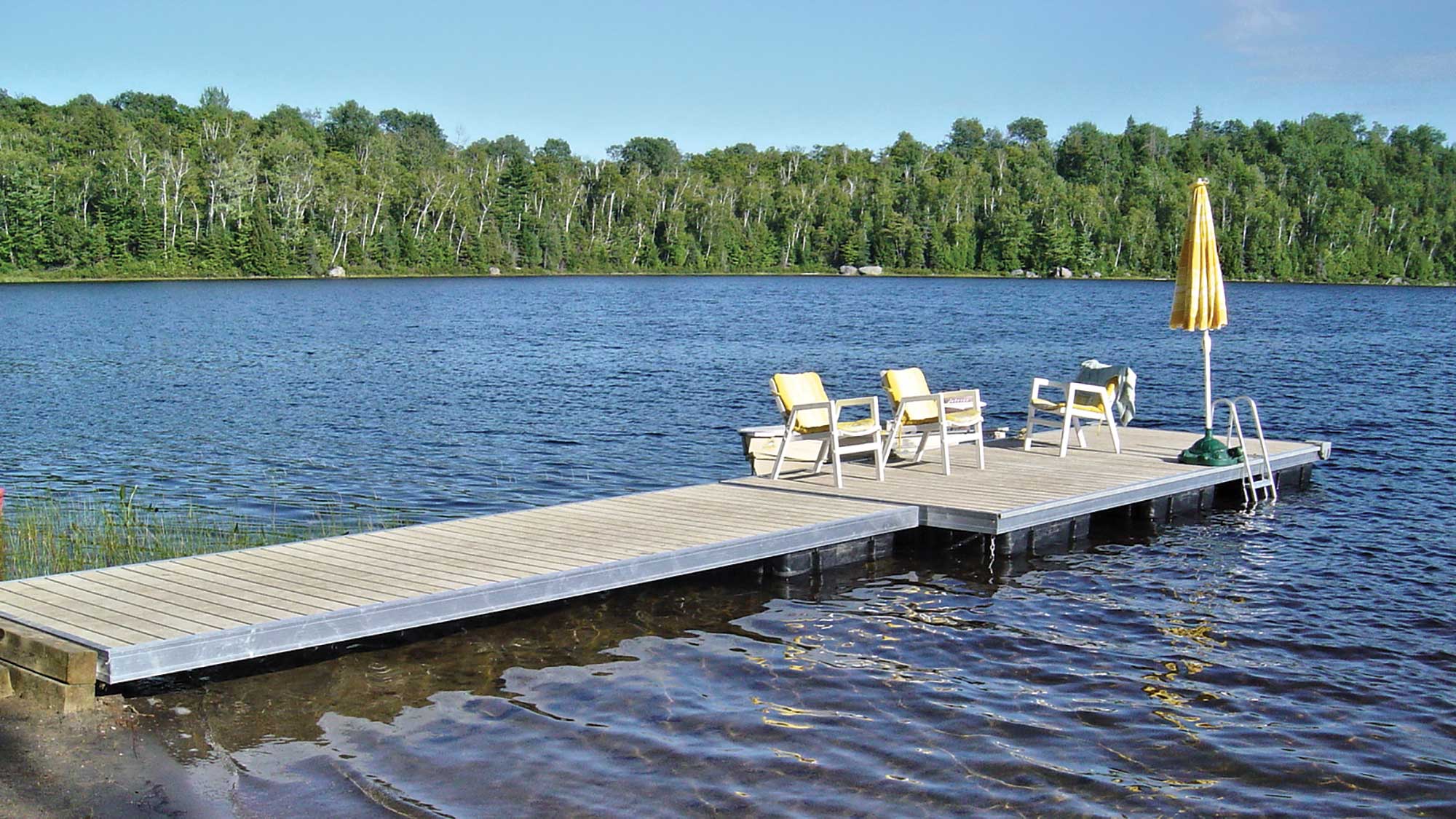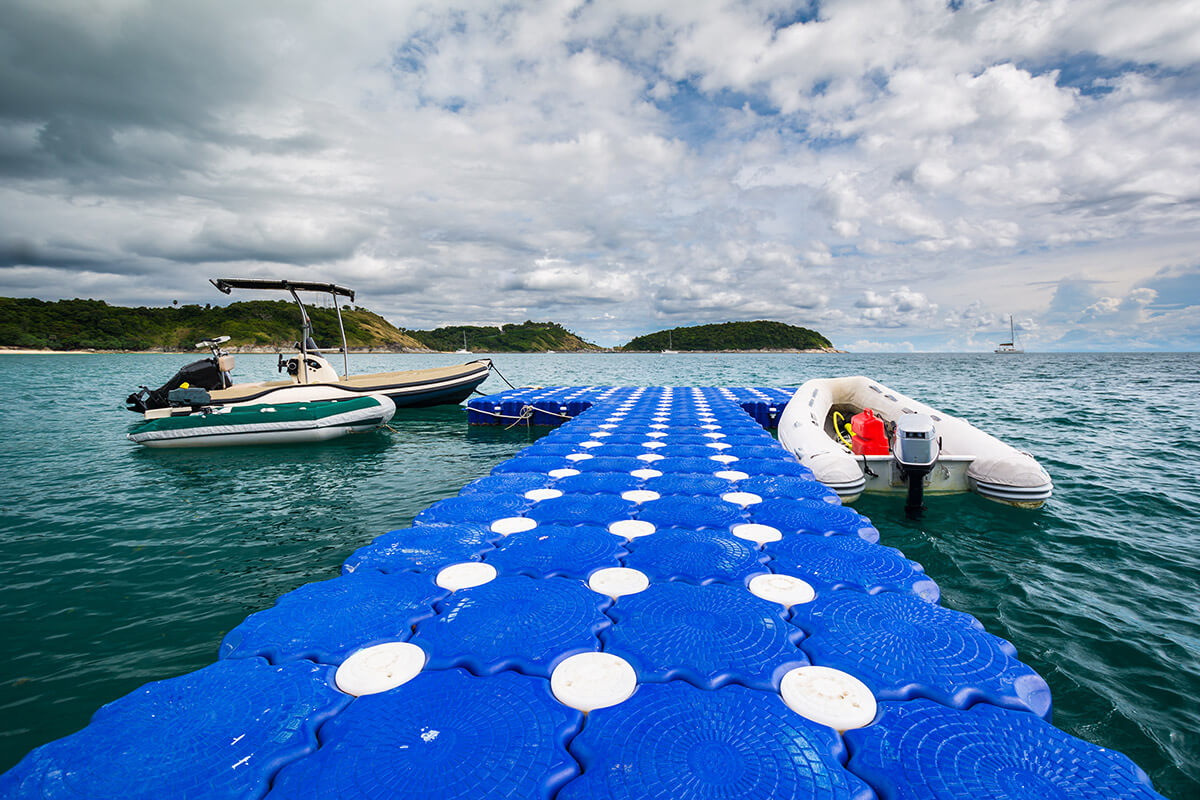Produce the Perfect Docking Remedy With Floating Docks
Floating docks existing a functional solution for a variety of maritime needs, adjusting perfectly to varying water levels and varied vessel types. Their modular nature enables for fast setup and relocation, yet the selection of appropriate products and design features is vital for guaranteeing both functionality and visual allure. As we discover the necessary aspects that add to the effectiveness of floating docks, numerous vital factors relating to stability and upkeep will certainly arise, questioning regarding just how to optimize your docking experience. The succeeding conversation will certainly brighten these vital considerations.

Benefits of Floating Docks
Floating docks offer many advantages that make them an excellent option for various maritime applications. One of the primary benefits is their versatility to changing water degrees. Unlike fixed docks, floating docks increase and loss with the tide, guaranteeing constant access for vessels. This function is specifically important in locations prone to significant tidal changes or seasonal water degree adjustments.
Additionally, floating docks are commonly easier and quicker to install contrasted to traditional set structures. Their modular layout enables for uncomplicated setting up and disassembly, helping with upkeep and relocation when necessary. This flexibility is especially valuable for momentary applications or in environments where conditions might change.
Floating docks likewise have a tendency to be a lot more ecologically pleasant, as they decrease disruption to the seabed and bordering aquatic ecological communities. Their resilient nature reduces the threat of damage to marine life, advertising a much healthier environment. Furthermore, these docks can be customized to fit numerous vessel sizes, making sure that they meet details operational requirements - floating dock services.
Inevitably, the mix of versatility, ease of installment, and environmental factors to consider makes floating docks an extremely reliable remedy for a large range of maritime demands.
Selecting the Right Materials
Choosing the ideal products for floating docks is crucial to guarantee security, long life, and sturdiness. The choice of products straight influences the dock's performance in various ecological problems, consisting of exposure to water, sunshine, and possible wear from marine traffic.
Typical materials used for floating docks consist of aluminum, timber, and high-density polyethylene (HDPE) Light weight aluminum is lightweight, corrosion-resistant, and requires very little upkeep, making it a superb selection for durability. Its initial cost can be greater contrasted to various other materials.
Timber, while cosmetically attractive and giving a traditional appearance, can be at risk to rot and insect damage otherwise properly dealt with. Using pressure-treated timber or naturally durable varieties like cedar or redwood can alleviate these issues.
HDPE is a popular choice because of its resistance to UV rays and chemicals, together with being eco-friendly. floating dock company. It is light-weight and available in different colors, permitting personalization
Eventually, the best material selection will rely on details demands, consisting of budget, desired appearances, and ecological considerations. Mindful analysis of these elements will certainly lead to a resistant and successful floating dock remedy.
Layout Considerations for Security
When making floating docks, guaranteeing security is a basic facet that can significantly impact their capability and safety and security. Stability in floating dock layout is affected by numerous variables, consisting of buoyancy, weight circulation, and the arrangement of components.
Weight distribution is vital; uniformly distributing loads across the dock prevents turning and boosts security. Broader styles can provide increased security, especially in rough water problems, while longer docks might need additional assistances to protect against drooping.
An additional crucial factor to consider is the environmental effect, including wave activity and wind. Integrating features such as sidewalls or skirting can aid alleviate the effects of ecological forces, maintaining security in adverse problems. Eventually, a combination of thoughtful style, material option, and understanding of environmental aspects will certainly produce a drifting dock that meets both stability and safety requirements.
Installment Tips and Techniques

Next, secure the necessary permits and stick to regional regulations, which may determine installment approaches and ecological factors to consider. If called for, engage a qualified professional experienced in floating dock setups. Use top quality products developed for article marine atmospheres to enhance sturdiness and long life.
When placing the dock, straighten it parallel to the coastline to assist in simple access. Ensure that the anchoring system is robust, using cinder block or helical anchors to stabilize the dock versus wind and wave activity. It's essential to represent seasonal water level changes, including prospective ice movement in chillier environments.
During the setup, confirm the dock's floatation and stability prior to finalizing the anchoring. Consistently examine the installment for any indications of wear or damages. By adhering to these strategies and tips, you can achieve a safe and secure, useful, and cosmetically pleasing floating dock installment that satisfies your demands.
Upkeep and Treatment Guidelines
Caring and keeping for floating docks is vital to lengthening their life expectancy and making certain safe use. Normal inspections must be conducted to determine any kind of signs of wear, damages, or marine development. Seek splits, loose fittings, or stained areas on the dock's surface area, as these concerns can endanger structural honesty.
Cleaning is essential. Make use of a pressure washer to get rid of algae, barnacles, and particles, which can accumulate gradually. For stubborn development, consider eco-friendly cleaner that will not harm marine life.
Additionally, examine the mooring lines and supports often to guarantee they are safe and complimentary from deterioration. Change any kind of torn or damaged lines quickly to keep stability.
During extreme weather, such as storms or freezing problems, take precautionary measures. Safeguard the dock with extra mooring lines and, if practical, eliminate any removable components to avoid damages.
Conclusion
To conclude, the implementation of floating docks provides a effective and functional docking solution appropriate for numerous maritime applications. Their flexibility to varying water levels, integrated with a see this website modular layout, permits very easy modification and relocation. Selecting proper materials improves both toughness and aesthetic charm, while directory cautious factor to consider of security ensures safety and security and long life. With correct setup and normal maintenance, floating docks can give efficient and reputable docking experiences for a vast array of vessels.
As we check out the crucial components that contribute to the effectiveness of floating docks, several crucial elements concerning stability and upkeep will certainly arise, increasing inquiries about exactly how to maximize your docking experience. Unlike taken care of docks, floating docks surge and loss with the trend, guaranteeing regular ease of access for vessels.When creating floating docks, making sure security is an essential aspect that can significantly impact their performance and security. Stability in floating dock style is influenced by different factors, consisting of buoyancy, weight distribution, and the arrangement of components. Eventually, a combination of thoughtful layout, product choice, and understanding of ecological factors will generate a drifting dock that fulfills both security and security needs.